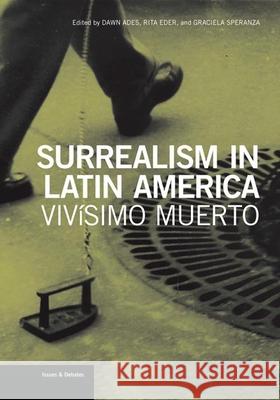Surrealism in Latin America: Vivísimo Muerto » książka
Surrealism in Latin America: Vivísimo Muerto
ISBN-13: 9781606061176 / Angielski / Miękka / 2012 / 232 str.
This collection of essays--the first major account of surrealism in Latin America that covers both literary and visual production--explores the role the movement played in the construction and recuperation of cultural identities and the ways artists and writers contested, embraced, and adapted surrealist ideas and practices. "Surrealism in Latin America "provides new Latin American-centric scholarship, not only about surrealism's impact on the region but also about the region's impact on surrealism. It reconsiders the relation between art and anthropology, casts new light on the aesthetics of "primitivism," and makes a strong case for Latin American artists and writers as the inheritors of a movement that effectively went underground after World War II. In so doing, it expands our understanding of important, fascinating figures who are less well known than their counterparts active in Europe and New York.Deriving from a conference held at the Getty Research Institute, the book is rich in new materials drawn from the GRI's diverse Mexican and South American surrealist collections, which include the archives of Vicente Huidobro, Enrique Gomez-Correa, Cesar Moro, Enrique Lihn, and Emilio Westphalen. This panoramic survey goes a step beyond other recent studies to consider surrealism's ongoing legacies, proposing that the surrealist movement in Latin America, like the "vivisimo muerto "(the living dead)--cannot be relegated to the past.











